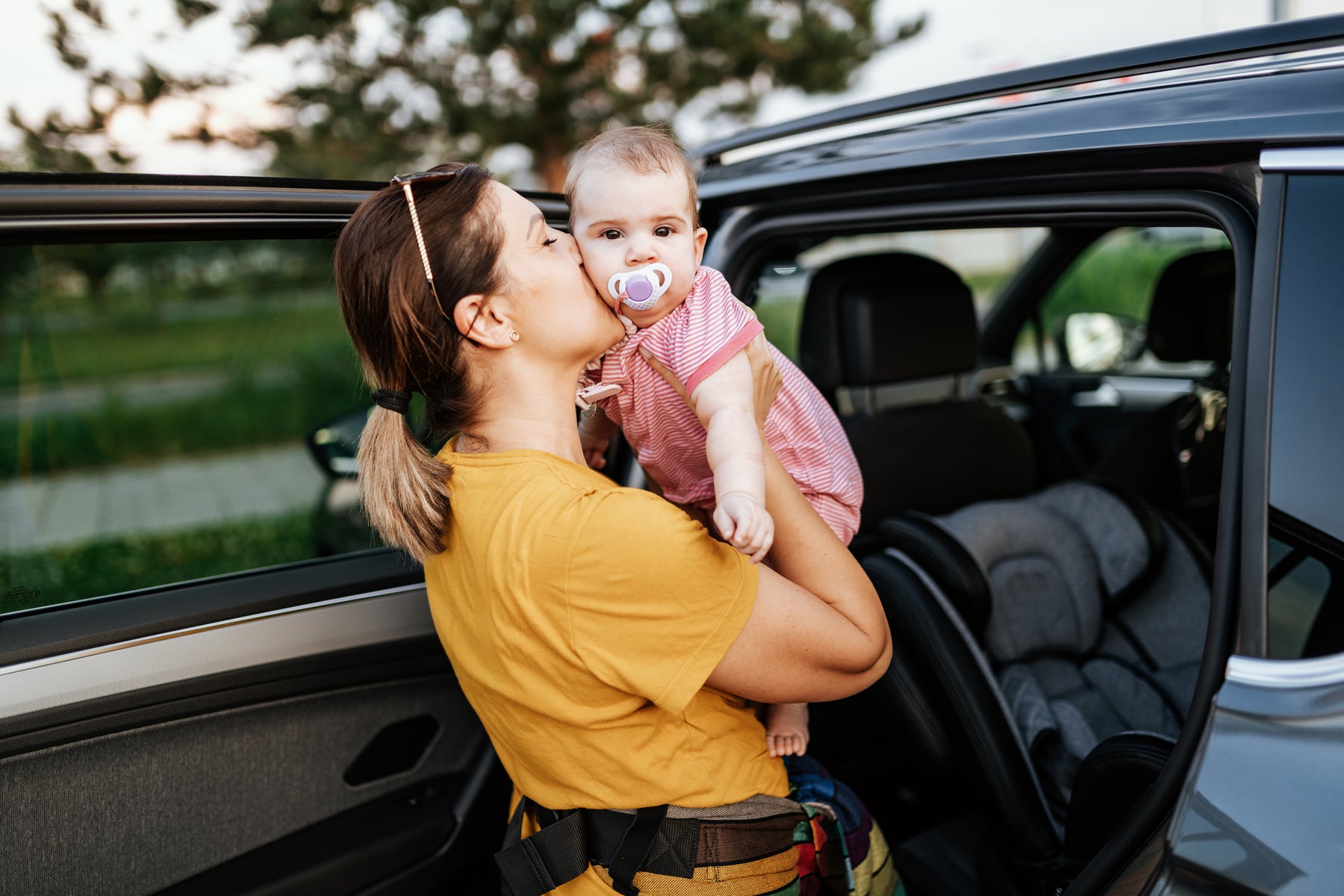
make your backseat safer
Choosing a top-notch car seat is only the first step. Check out these helpful car seat safety guidelines.
Driving around with a baby or kids in the car can be seriously stressful for parents. Do I have the safest car seat? Is it installed properly? Did I really get that strap tight enough?
We’re here to help make sure you are an expert on car seat safety so you–or your partner–can loosen that grip on the wheel just a little bit on your drive home from the hospital or around town.

be on the right level
You’ve got your manual out and your car seat ready. First things first: Make sure your car isn’t parked on a slanted driveway or hill when you first install the car seat. This will ensure the recline indicator (the little level that’s built into the car seat base) is giving you an accurate reading. Don’t forget to practice installing and removing your infant rear-facing car seat in the car you’ll take your little one home in.
You’ll also want to learn how to buckle and adjust the straps before having to do it with a teeny tiny newborn in the seat. (Trust us.)

go for the middle
Where a child is seated in the car matters just as much as how secure the straps are. To keep kids farther away from potential impact and active side airbags in the event of an accident, experts suggest placing the car seat in the middle of the back seat. If the middle isn’t an option, check your vehicle’s manual to find out where there are airbags, which are not designed for children, and if they can be turned off.

triple check the straps
A 5-point harness offers the best possible protection for your newborn but it has to fit properly. When you’re buckling up, remember to check these three things: chest, shoulders, legs. The chest buckle should sit across the breastbone, not higher or lower. The shoulder straps should come through the seat cushion at or below baby’s shoulders for rear-facing car safety. And the buckle between the legs should not be tucked behind the baby’s bum.
secure all that extra stuff
Babies travel with a lot of gear (✋ if you keep your stroller in the trunk!), but if it’s not strapped down or tucked into a cargo area, it could become a projectile in the event of a crash. The same goes for toys, kid trash, and everything else you threw into the backseat and forgot about before you had a baby. Do a weekly purge to make sure the car is clear of anything that could fall or fly during a sudden stop. Consider using an organizer that you keep in the trunk or is securely tethered to the car.

always skip the coat
You’re wondering, Won’t they be cold? And your parents told you that they put a coat on you all times in the chilly months, but this is how car seats are designed to fit these days. Bulky jackets and blankets get in the way of a snug-fitting harness—and that’s what keeps your baby safe! Warm the car first if it’s cold and try a car seat cover, which is basically a cozy sleeping bag that fits safely over your baby’s car seat.
stay in the know
Safety technology is constantly evolving, which is why it’s important to not only make sure your car seat hasn’t expired (look for the label on the seat itself), but to choose one with the most innovative features on the market. (Think seats that swivel for easy ins and outs, can monitor temperature to prevent overheating, and motion-sensors that alert you if your child becomes unbuckled.) Another quick but important step: register with the car seat manufacturer online or by mailing in the postcard so you’re notified of recalls. It takes two minutes and it’s well worth the peace of mind!
